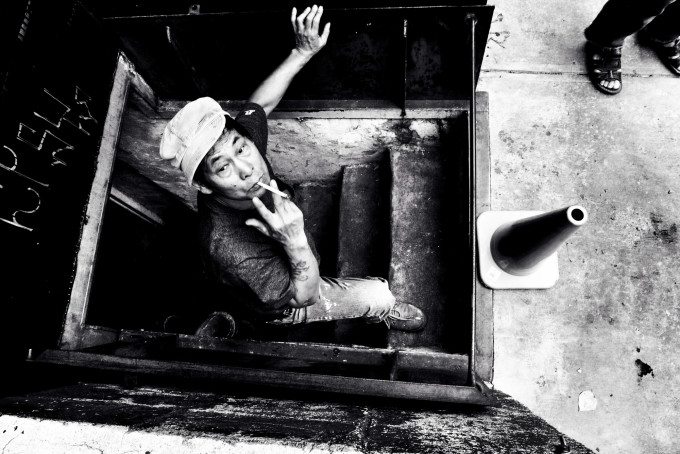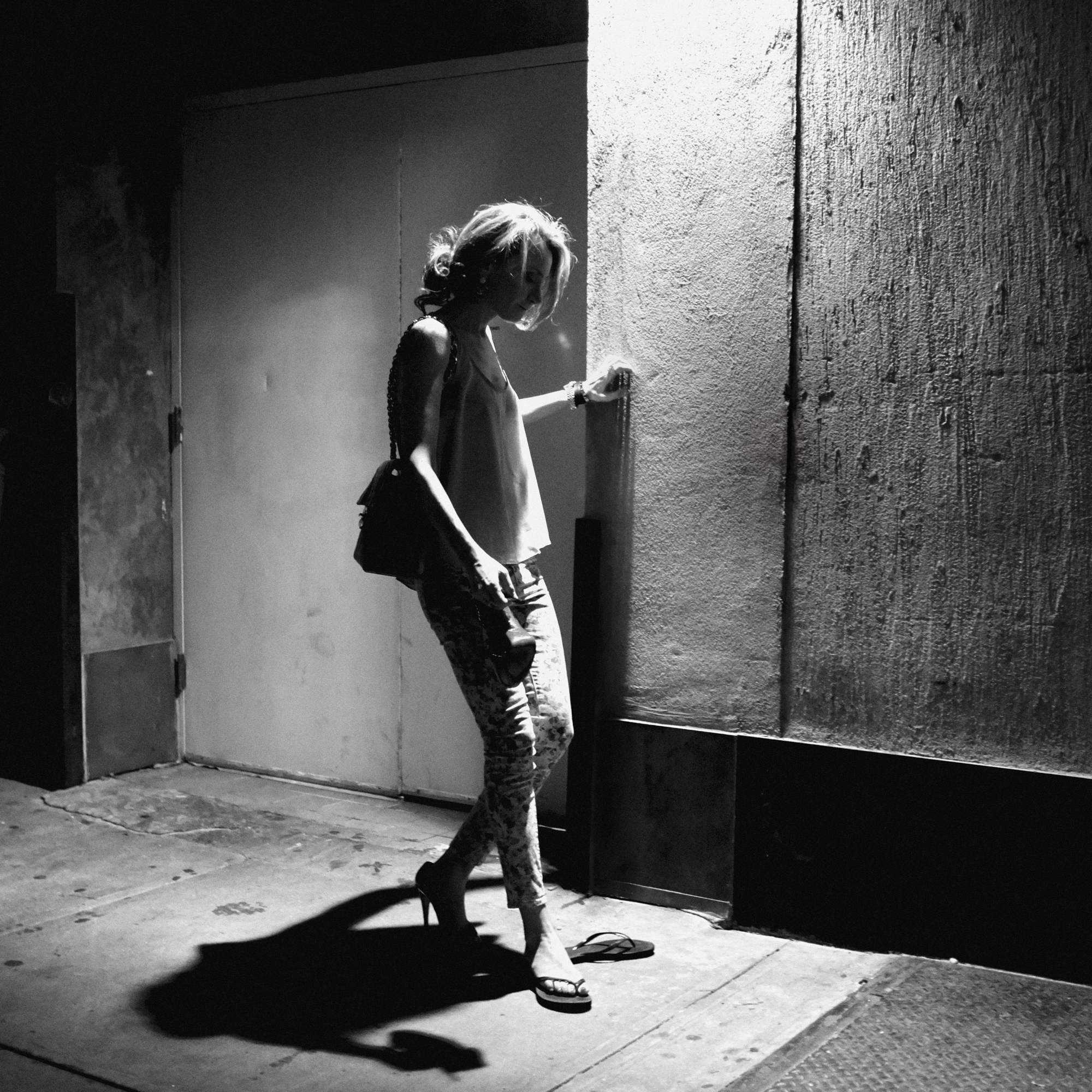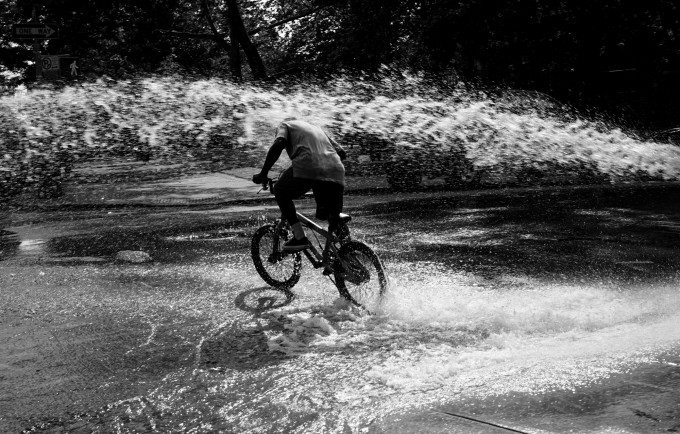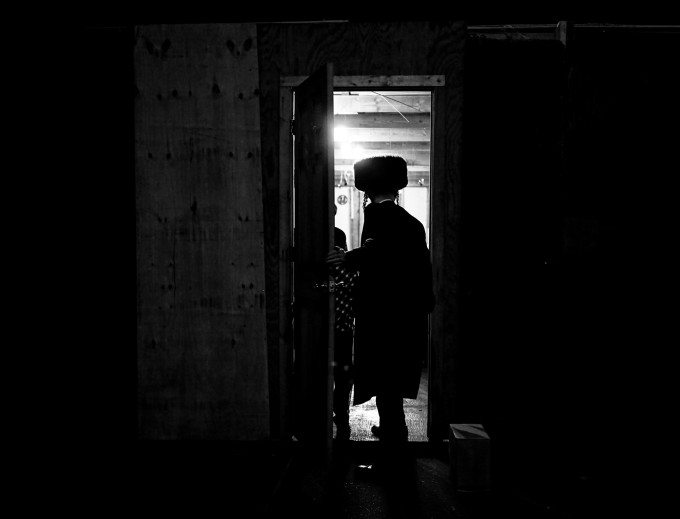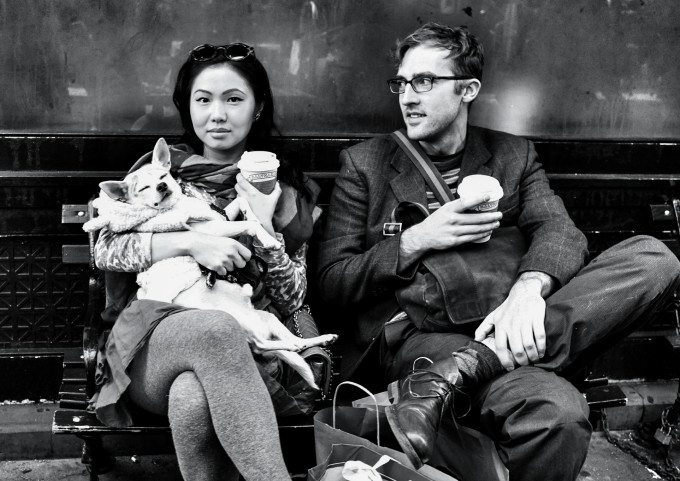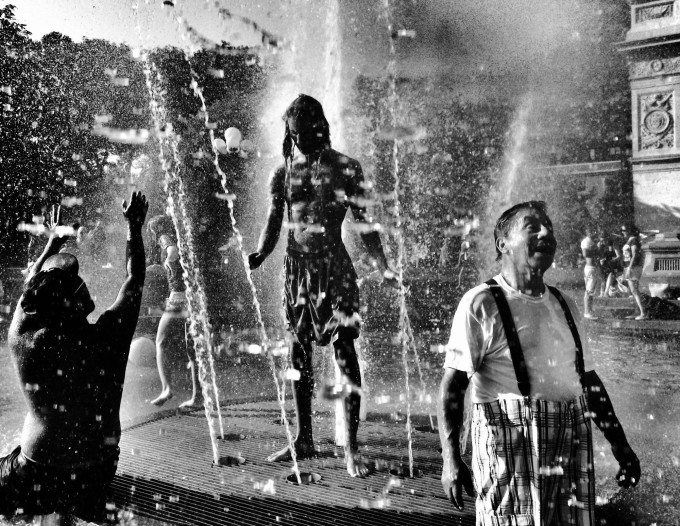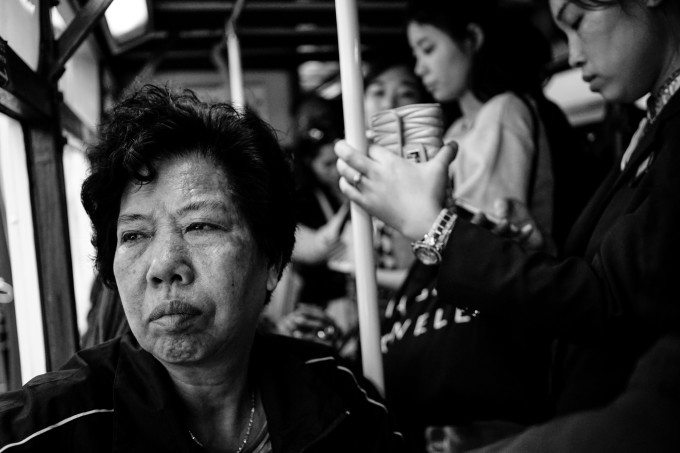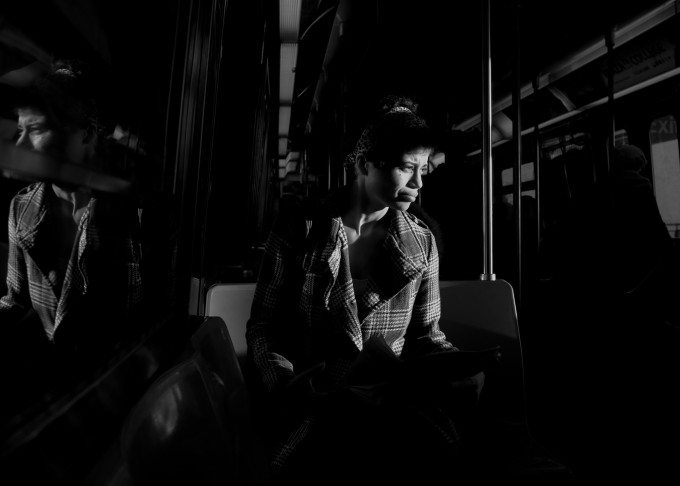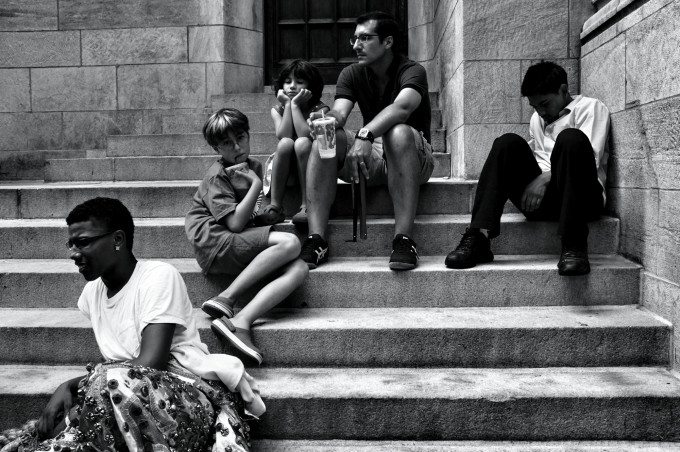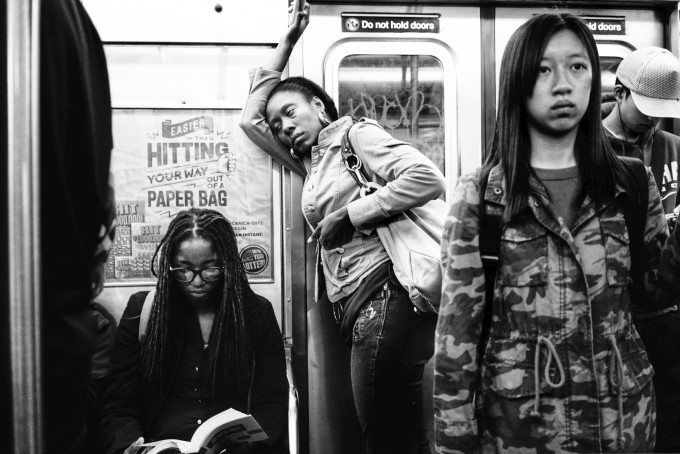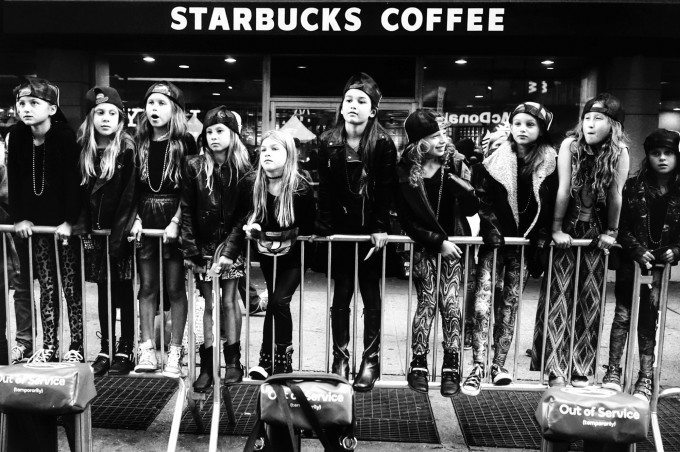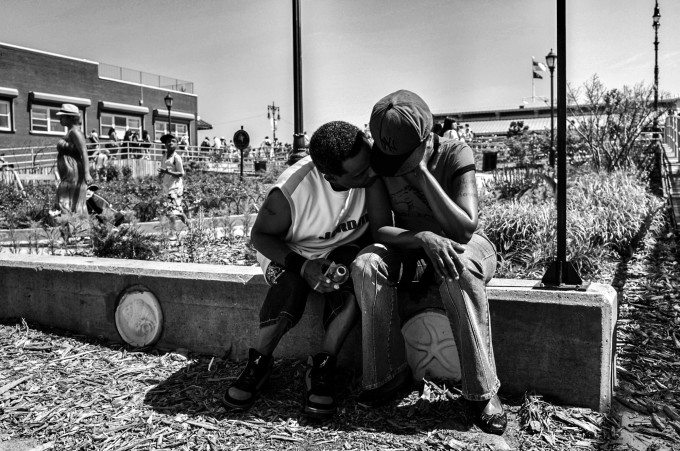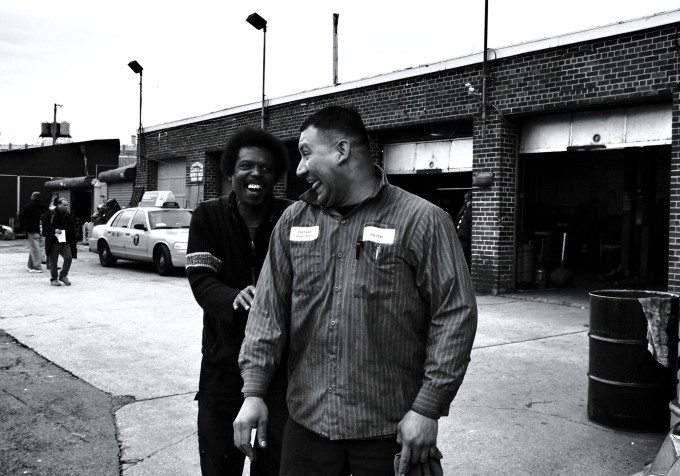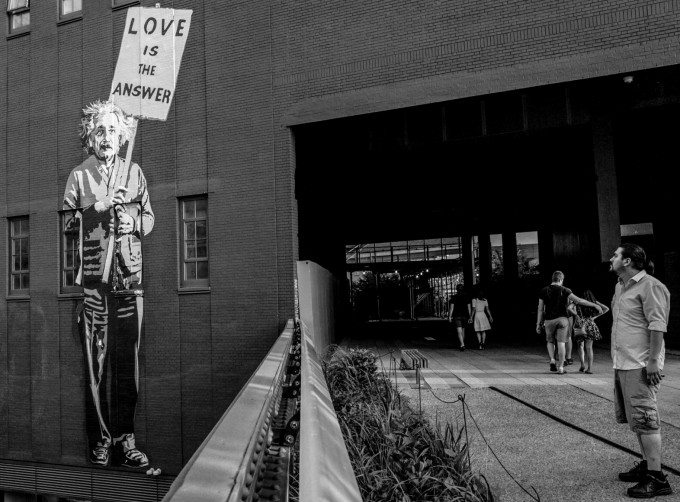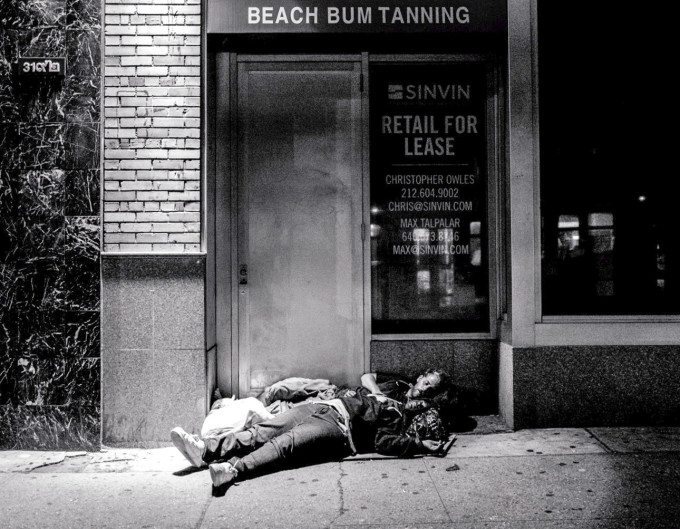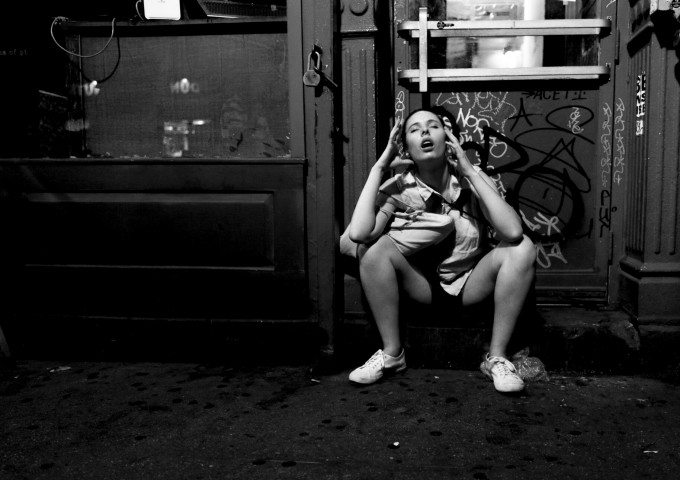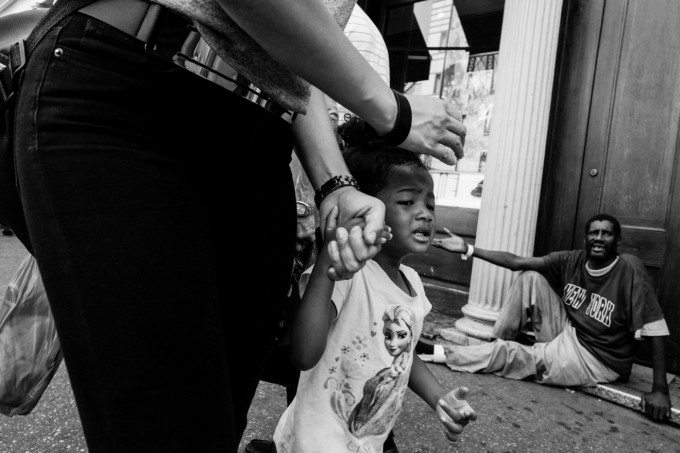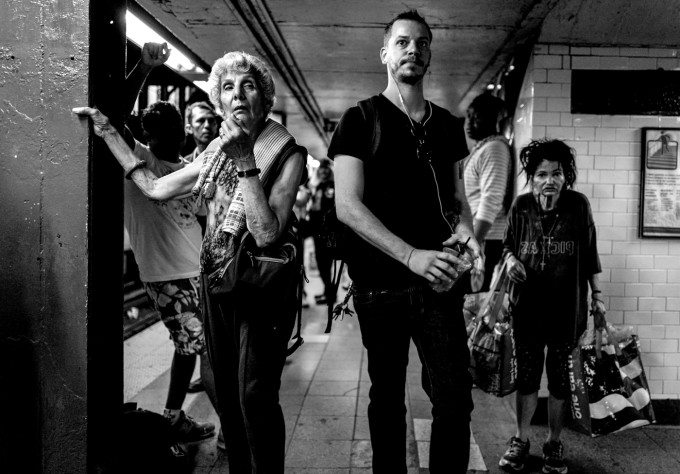All images by Clay Benskin. Used with permission.
For a number of years now, I’ve tried to secure an interview with one specific photographer: Clay Benskin. Heard of him? If you haven’t he genuinely at one point wanted to be the photographer known to never give interviews; but obviously the NYTimes changed that.. We met years ago, have gone on photo walks together, and I’ve always been in incredible awe of his photos.
In my eyes, Clay may be one of the best street photographers in New York City.
Phoblographer: Talk to us about how you got into photography.
Clay: It started out pretty innocently. About five years ago a good friend of mine bought an expensive camera and started obsessively taking pictures. I’m competitive by nature so, I bet him that I could take better pictures with my iPhone then he could with his expensive camera. I started capturing things around me I thought looked artistic by arranging different objects I found at work and ran back to show the pictures to my friend. A short time after that, I participated in a group art show that he was invited to by a friend of mine.
Phoblographer: What made you get into street photography?
Clay: The reason I got into Street Photography in particular also relates to my friend. One day I showed him a picture that I took out in the street of a kissing couple. He told me this type of photography is called “Street Photography.” He showed me a short video of Gary Winogrand, a well-known street photographer who I had never heard of. My initial attraction was not his photography but the way he was taking the pictures, it was funny, quirky and awkward.There was something exciting and dangerous to his process – somehow I related to this and almost instantly got hooked.
The video prompted me to google “Street Photography” and the first thing that popped up was an article on photo.net by Phillip Greenspun called “The Best Thing About Street Photography: Serendipity.” I only read a few lines of the article and I formed my own interpretation of street photography. I felt compelled to take pictures so I went out and took street shots from that moment on and never looked back. I’m not the type of person who studies the works other photographers. Very rarely will I even look at the masters of street photographer’s work in fear of being influenced by their style. I just want to capture the streets and people the way I see them, in my own style.
Phoblographer: You’ve always been a very conflicted but incredibly talented photographer not only in terms of your work but also in terms of the gear that you use. You’ve walked about NYC with a Fuji x100, an XT-1 and at other times with just your phone. What do you think drives you out of shooting and then back into street photography?
Clay: Thank you for the compliment. I’ve also used the Sony a6000, a7, and even the Leica Q. Street Photography has become my number one obsession. One of the reasons why I’m in and out of Street Photography is, I feel I really don’t know what the hell I’m doing out there. When I look at current street photographer’s work on social media sites, I compare myself and feel I’m not as good and get disgusted with myself. Also, I tend to sell whatever camera I have at the time and disappear until I take a picture that I think is good enough. The love that I have for this genre is what also keeps me coming back time and time again. I don’t think I’ll ever stop, even if I’m not posting my pics on social media sites, I still take pictures, it’s like my oxygen, it makes me feel alive.
Phoblographer: You obviously photograph a lot in NY. What typically attracts you to a scene enough to make you want to walk up to it and take a picture?
Clay: I love to shoot anywhere there are people, it doesn’t necessarily have to be New York. I work and live in New York so most of my images are naturally from New York. I grew up in the Bronx and was a very observant kid, people intrigued me. There was a mailbox in front of my building and as I waited for my friends to come out, I would watch people, usually for hours at a time.
I was like a sponge, soaking up all the different scenes being played out in front of my eyes. When I got older, my friends and I started going to clubs. I don’t drink or smoke, so instead of socializing, I would picked a wall and stand there observing everything. People drinking, getting drunk, dancing etc. I believe this is how I honed my people watching skills and now when I’m out in the streets, I feel I’m able to predict what a person is going to do, before they do it. I feel I’m completely in my natural element in the streets. What attracts me most to a scene are the stories I tell in my own head while watching it unfold. Street Photography is like a jigsaw puzzle and I love putting the pieces together.
Phoblographer: What are your favorite neighborhoods to photograph in and why?
Clay: I seriously love to shoot everywhere but I do have a few places that I go to again and again. Williamsburg is one of my favorites places, I love the old-world feel when it’s done right. I also just discovered Willets Point in Queens – I read somewhere that their trying to close it down, so I try to go every weekend for few minutes to shoot, there’s a certain beautiful grittiness to that place. When I’m feeling bold I like to go to the Bronx, Harlem. Then there are the obvious places like 5th Avenue, Chinatown and Soho. New York is like a goldmine for Street Photographers!
Phoblographer: For a while, you’ve never called yourself a photographer. Do you consider yourself an artist? To you, what’s the distinction?
Clay: I don’t generally see a difference between a photographer and an artist. They are both driven by things that move them and draw them closer to life. I still don’t consider myself a photographer or an even an artist for that matter. I got into photography for a different reason than most. For me it was the competitive aspect of it. Although, I did fall in love with taking pictures I still feel it’s just a hobby and it’s a way for me to relieve stress. I love the thrill of the hunt, it’s almost like I’m a hunter stalking my prey. It excites me to see how close I can get to people and not be seen. Most photographers have put in a lot of hard work and time to be called “photographers”. I’ve only been doing this for a few years so I feel I haven’t paid my dues to consider myself a photographer. Someday, maybe 10 years from now I’ll consider it.
Phoblographer: All of your work is in black and white. Why? What does Black and White do for you that color just doesn’t get?
Clay: When I was first exposed to Street Photography and I googled it, the first few pictures that came up were black & whites. This made me think, that must be the way of doing it. Of course I fell in love with the look of B&W. Some of the pictures I saw, reminded me of those old Humphrey Bogart movies. Don’t get me wrong, I would love to shoot color, if done the right way, color photography could be very beautiful. I made the mistake of looking at a few Alex Webb photos. I kinda understood how the colors and everything came together. To me it looked like a lot of work went into not only making an interesting picture but you also need to find the right colors to complement each other. Since street photography is only a hobby, color street photography is something I wouldn’t want to invest my time into. Sure I could get competitive and challenge someone to shoot color and push myself but for now it’s black & white for me.
Phoblographer: What do you think about street photography as a community/genre as a whole?
Clay: Street photography community? I wasn’t aware there was a street photography community. I feel street photography gets no love on Instagram where I post most of my pictures. I will say though, I’ve received a lot of love from numerous well respected street photographers and that feels good. Once again, I just take pictures for fun so I don’t get caught up and all the politics. I’m a voyeur when it comes to discussions about street photography on Facebook and from what I can tell you about these discussions is, there are too many critics, too many opinions and way, way to many teachers. That’s another reason I walk away from social media & street photography, because of all the comments and opinions, it makes seems like too much work is involved. I already have a day job so I do this simply for fun. I just want to shoot and shoot till I can’t shoot anymore.


